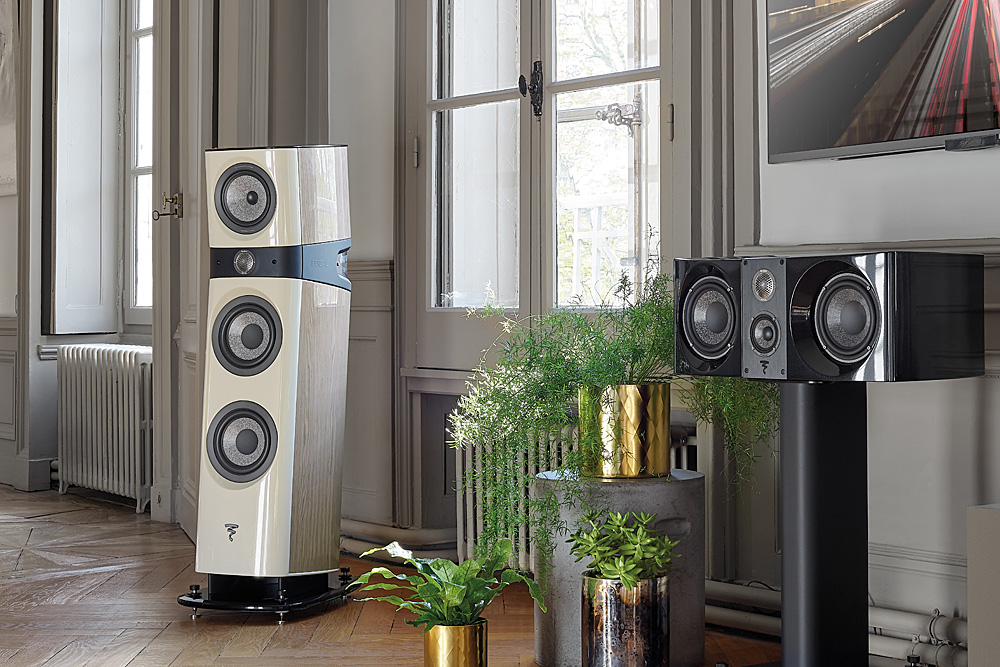Now celebrating its 40th anniversary, Focal was, originally, first and foremost a driver manufacturer. The company’s continual pursuit of excellence has meant investing heavily in R&D, along with state-of-the-art tools to test and evaluate its designs. Confirmation comes via its superb factory and facilities. Not surprisingly, when moving into designing complete speaker systems, the prevailing philosophy was to start with, and to perfect, the drivers first thus avoid the deleterious effects of complex crossover networks. As a result, Focal speakers are typically amplifier friendly and are therefore likely to perform consistently across a wide variety of equipment, giving the owner more freedom to enjoy their favored amplification. The Sopra range embodies the key technologies that Focal developed for its flagship Utopia range, but in a more compact and affordable package, allowing a wider audience to appreciate Focal’s signature sound. Here, we examine the mid-point in the penultimate range – the Sopra N° 2 loudspeakers.
Mid Points
Believing that the midrange is the most complex and musically demanding area for reproduction, Focal have focused their efforts into maximising midrange resolution and as such it has become in their words a “key element of the sound signature of Focal”.
To achieve the design goals, Focal takes full advantage of today’s available computing power and employs the Finite Element method to calculate and model the dynamic response of complex objects thus predicting the behavior of prototypes. In the Sopra range (one below Utopia) Focal employs what it calls TMD, an acronym for Tuned Mass Damping, where a computer model is used to accurately assess the addition of mass or stiffness to the driver’s suspension, with the added mass acting as a dynamic vibration absorber. Focal claims that this technique solves a well-known and to date previously unaddressed problem.
When there is a sudden change in mechanical impedance, where the wave passes from the cone to the surround, a ‘rebound effect’ is produced causing deformation of the cone and consequent blurring of the soundstage. Focal claims reducing this ‘rebound effect’ leads to multiple benefits including improved transient response, smoother frequency response and up to 50 percent less distortion in an area where the ear is highly sensitive. The result is said to be more accurate timbre, improved definition, and better stereo imaging. Interestingly, I learned that a similar mass damping solution was utilised in the construction of the skyscraper Taipei 101 (can’t wait to take that home to review).
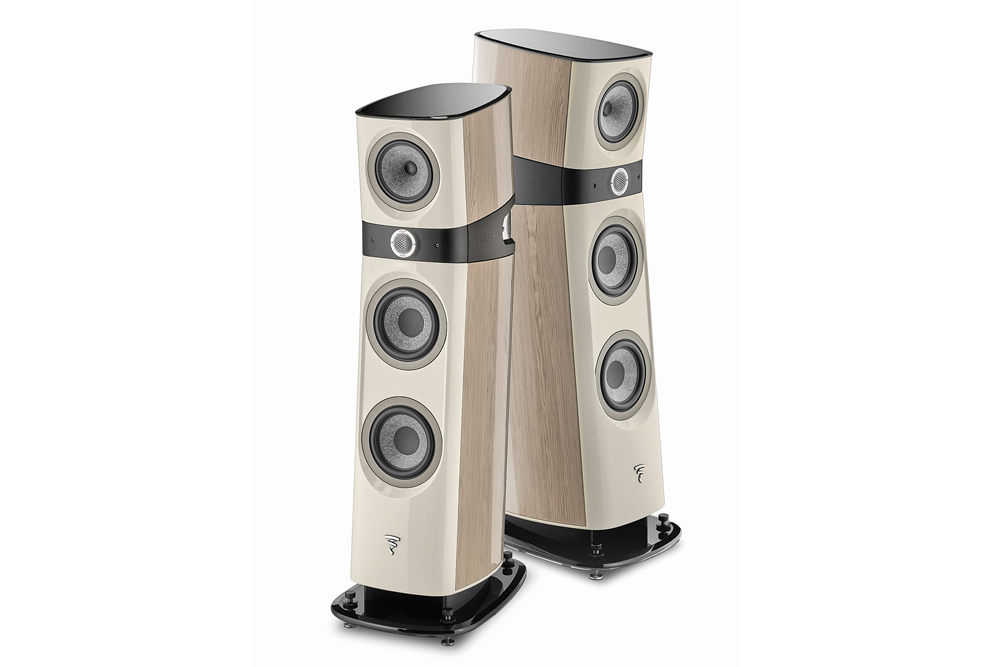
Similarly, Focal’s work on the magnetic circuit within drivers is impressive. Without getting bogged down in the details (which you can read in the whitepaper available on the Focal website), suffice to say that Focal’s research and advanced modelling tools have conceived a solution to stabilise inductance leading to reductions in distortion for woofers (both harmonic and intermodulation) by as much as 70 per cent.
Then of course there is Focal’s decision to utilise Beryllium as the material of choice for its inverted dome tweeters. The in-house manufacturing process produces domes that are incredibly light and rigid which minimise ringing, resulting in spectacular transient response. To overcome the primary limitation when using Beryllium, which comes from the compression of air in the cavity behind the tweeter driver, Focal employs what it calls an Infinite Horn Loading system where the rear wave of the tweeter is delicately and gradually absorbed to avoid any distortion.
The Sopra N° 2 is a 3-way speaker, with dual 7-inch woofers in a gorgeous cabinet. Designed and built in France, it is constructed using the same manufacturing process as the Utopia. The 69mm sandwich-machined front panel provides inertia and damping. Inside, the cabinet has no parallel side panels while small Helmholtz resonators have been added to the lower section to prevent vertical standing waves. Drivers are placed in Focal’s usual driver arrangement, where the midrange is above the tweeter in a series of baffles, each angled toward the listener.
Focal specifies the Sopra N° 2 to have a frequency response of 34 Hz to 40 kHz +/-3dB with a -6dB point at 28 Hz. Sensivity at 2.83V/1m is said to be 91dB and the impedance a nominal 8 ohms with a minimum of 3.1 ohms.
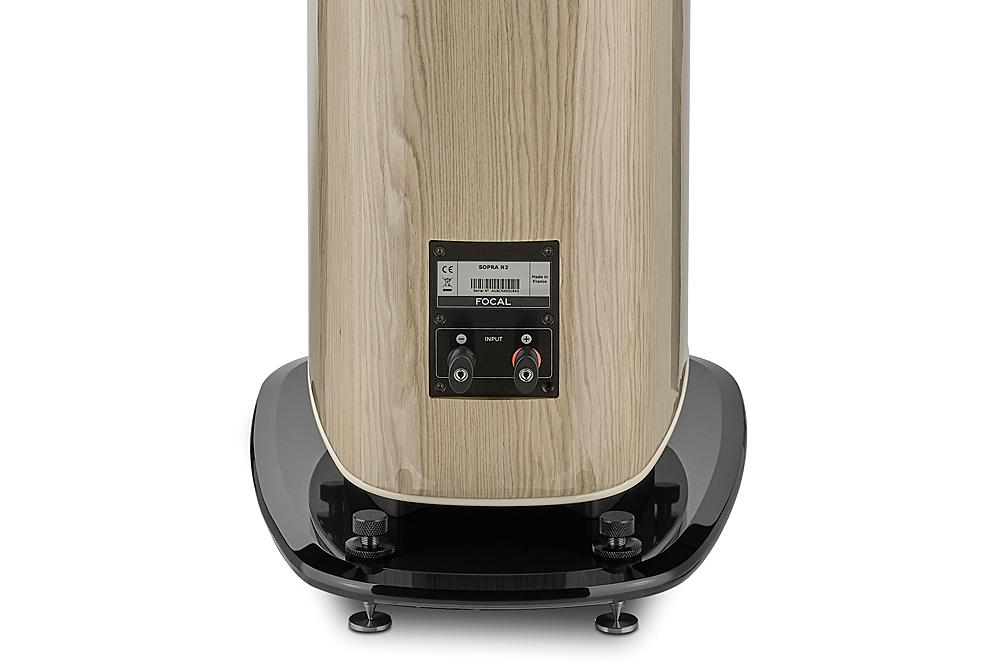
The Sopra N° 2 sits on a 19mm tempered glass plinth and features high quality pikes. Available in a variety of stunning lacquered or wood finishes it is likely to integrate easily with your home décor.
Astrology or Astronomy?
As I spent the afternoon absorbing Focal’s white paper it occurred to me that, unlike some claims circulating in the realm of high-end audio, which often have fancy names and are difficult to correlate with any real science, the problems identified and addressed by Focal are based on the application of real-world physics. In my mind, Focal’s approach could be likened to Astronomy whereas some others are more Astrology.
I like to start any set up process by firstly considering any manufacturer recommendations. Since this represents the benchmark for what is deemed acceptable and there have most likely been substantial hours of listening tests involved in the creation of this recommendation, it is often a great starting point. Of course, all rooms are different so some fine tuning may be required.
My listening room measures 5.94m length by 2.65m height with a 3.5m width (approx. 21 square meters). A little smaller than the minimum 30 squares recommended by Focal and well short of the upper range of 70. It’s worth pointing out that this room has undergone significant acoustic treatment with Vicoustic ‘Multifuser’ panels on the ceiling, front and rear walls, plus ‘Wavewood’ absorber panels on the side walls and ‘Super Bass Extreme’ bass traps in the corners, all of which help even out response in the room.

After placing the speakers according to the manufacturer’s recommendations, if the room layout permits, I like to position the seating at least 1m from the rear wall to allow for reverberation time. In some cases, this is not practical for reasons of furniture layout or spousal acceptance, or it may just put you too close to the speakers or in a ‘null’ zone where bass energy is at a minimum. So, like many things in life, prepare to remain flexible.
In my room this was achievable so I then moved to some initial listening. After some experimentation I ended up with the speakers placed at 1.08m from front wall and 0.6m from side wall with a toe in of 18 degrees at my listening distance of 3.35m.
Joybringer
I decided to begin listening with Intuit’s 2017 Canyon Roots album (FLAC 44.1/16). Around an hour later the last track finished. Wow! Now the hard part – putting into words what just happened…
The Sopra N° 2 portrayed the jungle-like rhythms on the track “Joybringer” with such precision and power that, with my eyes closed, it was hard to imagine the musicians weren’t in the room. Drums were crisp and powerful with full reaching depth. Percussion is nothing short of excellent; the Sopra is a super-fast-sounding speaker from top to bottom. This aspect is what makes some speakers better than others at portraying rhythm – the ‘speed’ needs to be consistent across the full range of frequencies. The Sopra, along with a handful of other high-end speakers around this price point, brought the performance to life in the listening room.
Intuit’s Chloe Watkins’ vocals were bang-on the right height within the soundstage, appropriately sized and precisely focused rather than being diffused, as happens on lesser speakers.
On “Moon Song” the Sopra exuded deep, taut bass. In the duet, vocals were sublime. They say the devil is in the details and I agree – I could easily sense the friction of the bow across the cello strings and the way they responded with subtle changes in pressure.
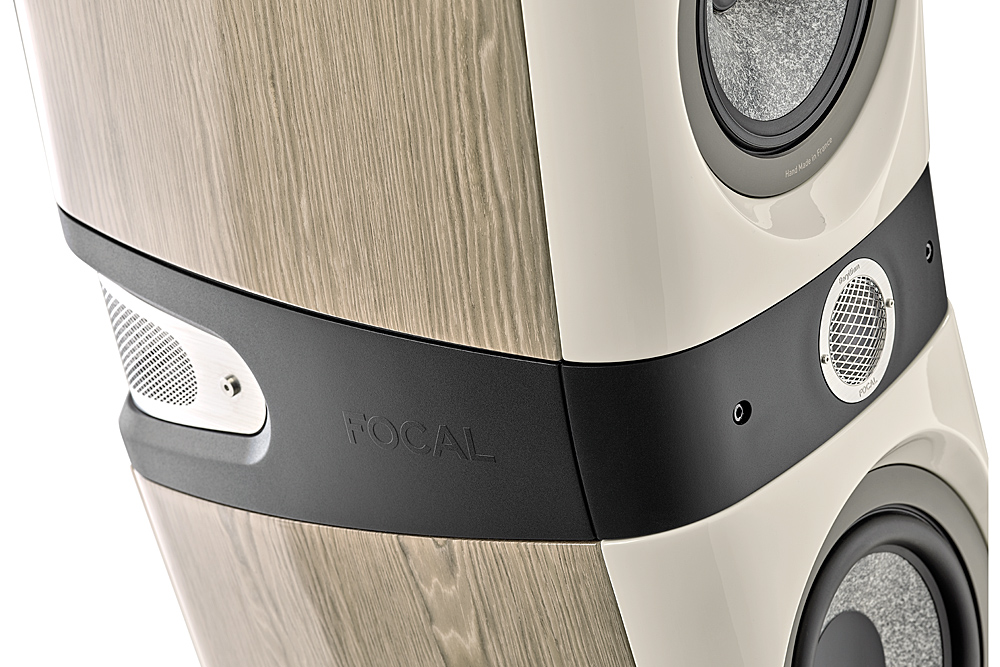
Again, in “Phat Head” the opening percussion was striking, everything hangs together perfectly. A truly sassy phrase ensues which is picked up and portrayed by each instrument with fabulous effect.
On the track “Physical Love” the energy was stunning and the way the Sopra carried the momentum by following the numerous starts and stops, without any overhang, was extraordinary. There was only the slightest trace of ‘a box’ when compared to my reference open baffles, or the Martin Logan Spires. The vocals were beautifully projected into the room. The arrangement of dual guitars, effectively wrapping around the soundstage, worked well and the Sopra captured the ‘rawness’, drawing my attention to the intensity of the chords being struck.
Turning to an old favorite to make the most of this guilty pleasure, I magic-ed-up Joe Jackson’s “You Can’t Get What You Want (Till You Know What You Want)” from his Body & Soul album. To be heard to full effect this track requires speakers that can start and stop on a (insert small value coin of choice here). After the last hour with Intuit I suspected the Sopra would make a good go of it and I was not wrong. The way they handled the dynamic swings was most impressive. The horn section was superbly portrayed and the drums and driving bass was delivered with power and grace, the Sopra clearly resolving the bass notes and avoiding any tendency to blur one note into another.
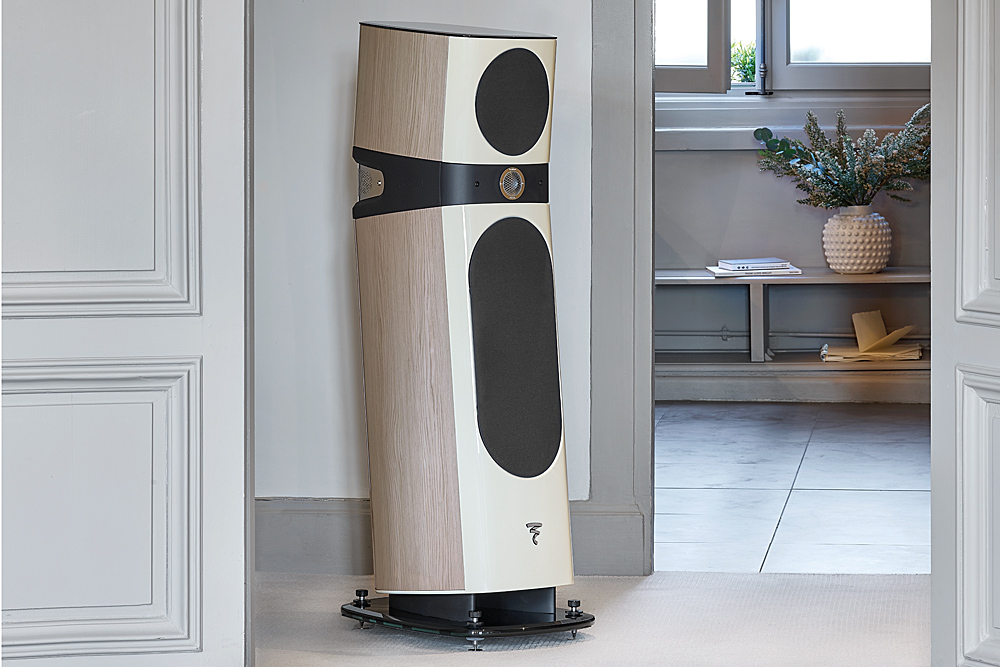
Time for a little John Mayer (in truth, I’m not at all certain that he is little) – “Queen of California” stared at me from the screen of the Uniti Star USB interface. First to stand out was the kick drum… it kicked! Picked strings on Mayer’s guitar were sweet and his characteristically gentle vocals came to life in the room.
Impressed by JM’s sweet-sounding guitar I searched for Pat Metheny’s “The Sound of Silence” from his album What’s it All About? One word… OK I can’t write that word here – how about: Lovely! It never ceases to amaze that something this simple can illustrate the difference between a good set of speakers and a great pair of speakers. Through the Sopra at a good level you can pretty much hear the air compress and release in front of you, such is the precision with which they perform. This track on the Sopra was so good that I had to play it twice. I noticed for the first time that in this room, with which I’ve become quite familiar over the past several months, the Sopra was able to localise Metheny on the right of the soundstage with minimal ‘bleed’ across into the left. I’ve not been able to achieve this in my other (albeit untreated) living room, even with dipoles.
The opening track “Things Left Unsaid” from Pink Floyd’s last album The Endless River was mesmerising. The Beryllium tweeters on the Sopra providing a stunning portrayal of the synth sound effects and again I found I was able to localise the sound effects within the soundstage. The low bass note at the end of the track demonstrated how much grip the Sopra had on the deep stuff. Impressive for a speaker with relatively small woofers.
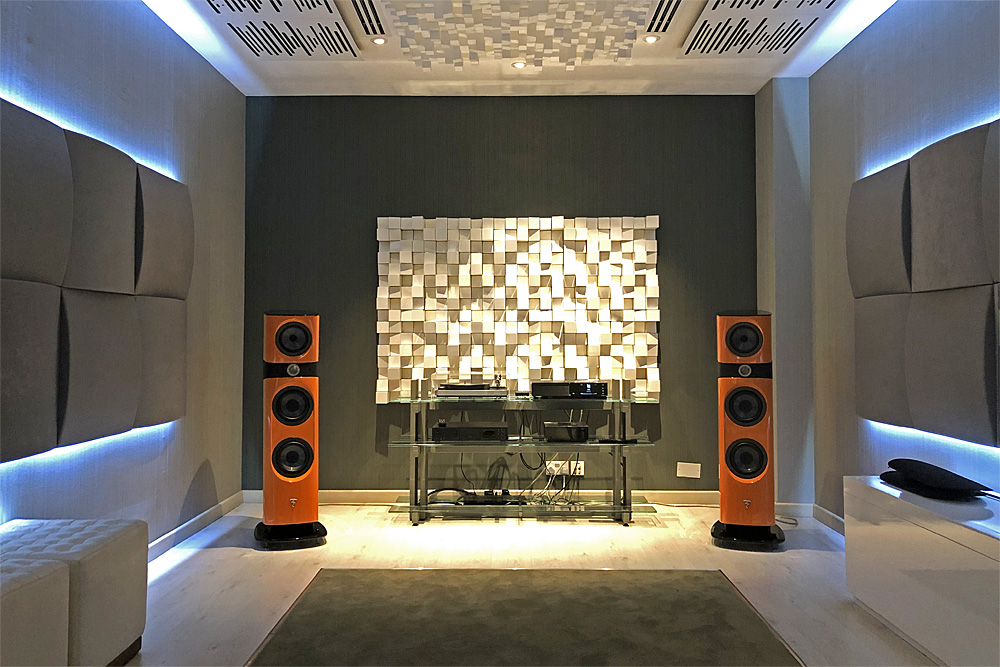
Florence + The Machine’s “Big God” portrayed the power of Florence Welch’s voice – the emphasis she puts on certain words added to the realism again, providing a sense that she was there in the room. The hand clapping sounded as though it was real and right in front of me. The Sopra maintained the dark haunting atmosphere on “Ship to Wreck” and did their usual trick i.e. the ultra-responsive ability to follow the bass line and start/stop with precision, allowing for a rhythm that makes you want to move.
I like to include some solo piano in my listening, as the piano often proves to be a challenge for any speaker to credibly reproduce. Nocturnes Op. 9: No. 2 in E flat by Chopin is, in my opinion, one of the most beautiful pieces for piano yet conceived and as such can be difficult for assessment due to the high distraction factor. However, also in my opinion, it takes a certain caliber of audio system to really do this piece justice. Streaming Claudio Arrau’s rendition from Qobuz (44.1/16) through the Sopra, the piano was full bodied and had that lovely ‘resonance’ while maintaining a realistic attack and decay of notes.
Mahler’s “Titan” (Francois-Xavier Roth, Harmonia Mundi) Streamed from Qobuz is a hugely complex piece of work with full orchestra in some sections. The Sopra was able to unravel it without showing any signs of congestion throughout, even in the busiest sections. Excellent dynamics, front to back depth and width extending beyond the speakers revealed this work’s enormous scale.
Conclusion
The Sopra N° 2s are versatile speakers across a wide range of music. Rather than doing one thing spectacularly well and falling short in other areas, the Sopra are exquisitely well balanced. If I had to name the primary strength it would be their almost Wilson-like imaging and the ability to provide focus on vocals, no doubt due to the goal Focal mandated in regard to the midrange. They are a very fast sounding speaker for a traditional cone-in-box design and produce clean powerful bass in the lower registers, quite amazingly so for a speaker of this size and driver configuration. Of course, there are other speakers that will deliver more in each of these areas, however you must pony up some very serious money to realise any sizeable gains.
“Reveal the Invisible” heads up Focal’s description for their Sopra N° 2 and for sure it’s an apt statement. By high-end standards, the Sopra is not at all expensive. The Wilson Audio Sabrina, and Magico’s A3 come to mind as competitors, with both being more expensive. Considering the level of performance, not to mention the stunning design, build quality, finish and the real-world technological innovations applied, the Sopra is a force to be reckoned with. I could live with these…
Can somebody tell me that I have to? Please?
… Barry Jones
NOTE: Thanks to the super-decent chaps at Dubai Audio, who have helped make my expat audio experience far more enjoyable than I had originally anticipated, I was able to audition the Focal Sopra N° 2 speakers in, what all things considered, has become my second listening room.
Associated Equipment:
- Speakers — MartinLogan Spire
- Amplifier — Perreaux e250i 40th Anniversary Edition integrated amplifier
- Sources — Digital: Naim Uniti Star, Lumin T1, Oppo BDP-105D, Sonos ZP90. Analogue: Rega RP6 turntable, Rega Exact-2 cartridge, Rega Aria phono stage & Rega Couple interconnects
- Processor — DEQX HDP-5
- DAC/Headphone Amplifier — Chord Mojo DAC
- Headphones — AudioQuest Nighthawk
- Cables — Vertere Pulse-X standard, Nordost White Lightning, Kimber Cable Timbre balanced and Van Den Hul D-300III unbalanced interconnects, Atlas Compass Digital Coaxial Audio Cable, QED Performance Graphite USB
- Miscellaneous — Isotek Sirius Power Conditioner, custom made bass traps in front wall corners
Focal Sopra N° 2 Loudspeakers
Price: AU$22,300
Warranty: Two Years
Australian Distributor: BusiSoft AV
+61 3 9810 2900
www.busisoft.com.au
Focal Loudspeakers
108 Rue de l'Avenir
42350 La Talaudière
France
+33 4 77 43 57 00
www.focal.com







